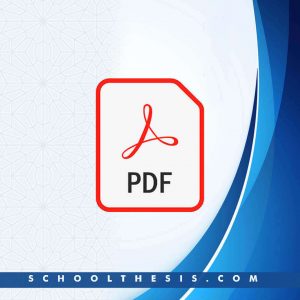Agricultural Public Spending in Nigeria

Agricultural Public Spending in Nigeria
Quick Navigation for Final Year Undergraduates, Masters (Thesis), and Ph.D. Dissertation Students Who Need Our Services on Their Research Works
| Find More Project Topics | FIND HERE |
| Hire Us for Thesis Works | HIRE NOW |
| Hire Us for Project Works | HIRE NOW |
| Hire Us for Seminar Works | HIRE NOW |
| Hire Us for Assignments | HIRE NOW |
| Hire Us for Proposals | HIRE NOW |
| Contact Us | HERE NOW |
Abstract on Agricultural Public Spending in Nigeria
The potential contribution of agriculture to economic development in Nigeria is discussed in two important government policy documents: (i) the National Economic Empowerment and Development Strategy (NEEDS), and (ii) the New Agricultural Policy Thrust (NAP). NEEDS, implemented in 2004 as Nigeria’s homegrown poverty reduction strategy, emphasizes the importance of increasing agricultural production and safeguarding food security as the country pursues its overarching goal of diversifying the economy away from oil (NPC 2004). NAP, adopted in 2001 and modified two years later, does not present a detailed action plan but articulates a vision of how agriculture can become an engine of growth and poverty reduction, identifies binding constraints to the realization of that vision, and proposes policies to overcome those constraints (FMARD 2001). The strong emphasis in NEEDS and NAP on agricultural growth shows that agriculture is attracting renewed attention in the national development agenda of Nigeria. But strategies and policies alone will not be sufficient to transform Nigerian agriculture into a dynamic engine of pro-poor growth. Strategies and policies will have little impact unless they can be translated into an implementable action plan that is supported by legislative action and backed up by appropriate public expenditure. With Nigeria’s agricultural sector continuing to underperform relative to the ambitious targets set by government, hard questions are being asked about the quantity and quality of public expenditure in agriculture, as well as about the appropriateness of the institutional environment in which public expenditure decisions are made. Answering those questions will require a thorough understanding of public-spending patterns and trends in Nigerian agriculture. This paper seeks to achieve four main objectives: establish a robust database on public expenditure in the agricultural sector; diagnose the level and composition of agricultural expenditure in the recent past; understand the budget processes that determine resource allocation in the sector; and draw preliminary policy recommendations for improving the efficiency of public expenditure in the agricultural sector. Understanding the pattern of public spending in a sector and the process through which spending decisions are made usually lies at the heart of any public expenditure review.
Disclaimer
This research material is intended for academic use only and should be used as a guide in constructing your research project and seminar presentation. You should never duplicate the content word for word (verbatim), as SCHOOLTHESIS.COM will not be held liable for anyone who does.
The purpose of publishing this material is to alleviate the stress of hopping from one school library to the next in search of research materials. This service is lawful because all educational institutions allow students to read past projects, papers, books, and articles while working on their own.
SCHOOL THESIS is merely giving this information as a research reference. Use the document as a reference or structure for your own research paper. This paper’s content should be able to assist you in coming up with new ideas and thoughts for your own study
Agricultural Public Spending in Nigeria research paper, should only be used as a guide.
